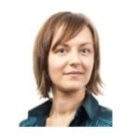Communicating Philanthropy: who is listening?
I am taking the liberty to slightly rephrase the key question raised during the launch meeting of communications professionals in philanthropy, kindly hosted by the European Foundation Centre in Brussels on the 1st and the 2nd of March 2017, when some 20 communications professionals from charitable foundations across Europe met to exchange thoughts, ideas and best practices.
The key question raised by my peers across Europe was, in fact, “Who cares about philanthropy?” And how can we make them listen, and care?
This question summarises some of the top concerns raised when debating communicating philanthropy, and it seems these are common concerns among practitioners in many countries and foundations across Europe:
- How can we craft powerful messages? In a universe overwhelmed with information, in a cluttered media landscape, drawing anyone’s attention to ‘doing good’ is a serious challenge. After all, charitable programmes can only cater for hundreds, or thousands at best, among the millions of refugees arriving in Europe or vaccinate only a limited number of children among those in need.
- How can we speak to those not converted? Having a database of more than 5,000 e-newsletter recipients is all well and good, but how about those outside our realm? All of us, indeed, need to seek out new ways to reach out to those audiences that are sceptical to our messages.
- How can we draw media attention? Having agreed that press releases no longer work as they used to, having confessed that all of us communications professionals struggle with press conferences and media lunches, when so much effort is put into organising every detail and very few people eventually turn up, it is now a real challenge to find new ways of reaching out to the media as well.
- How do we measure the results of our work? Using KPIs is a must when reporting to a corporate entity on the results of a marketing plan, for example, but not all of us communications professionals have found the most effective ways of reporting on the results and value of our work in such a way that highlights the undeniable importance of communications within a charitable organisation.
- What do we talk about, really? Is it the mission of the organisation that will grasp the attention of the public and the media? Certainly not, I would argue, no one really cares about what each and every foundation is tasked to do. Is it the change we are trying to bring within our societies? Could be, but change often takes too long to witness and report and in a universe where our audiences (and our own) attention span has reached its lowest levels, demonstrating change will take far too long to convince our audiences that there is really something here worth looking at.
It seems to me that, in our efforts to communicate philanthropy, what we really need to be looking at is the true essence of the word ‘philanthropy’ itself. Originating from the Greek language and transmitted via Latin, the world itself stands for ‘man loving’ or otherwise said, ‘love for the human being’. So it is the human being that we support via our work that is the true hero (and heroine) of our communications efforts.
In our attempts to promote the EEA Grants NGO Fund for Greece, for example, which the Bodossaki Foundation has managed between 2013 and 2017, our team has worked a lot on creating and disseminating human stories of people who have directly benefited from the grants. Whether that hero is Mose, a young boy from Eritrea who made it to Greece alone and has now found a safe home and a family with the Society for the Care of Minors shelter in downtown Athens (see short film “We are all one family”) or Christina, a lawyer who has spent many months in Lesvos, Greece, working with NGO METAdrasi as a guardian for unaccompanied children, (see short film “We are all citizens of the world”), it is actually their story that makes all the difference. And it is their story we should be telling the world. And then, perhaps, people and the media will begin to listen again. And care.
Photo credits to Christophe Vander Eecken
Authors

Communications Officer, Bodossaki Foundation